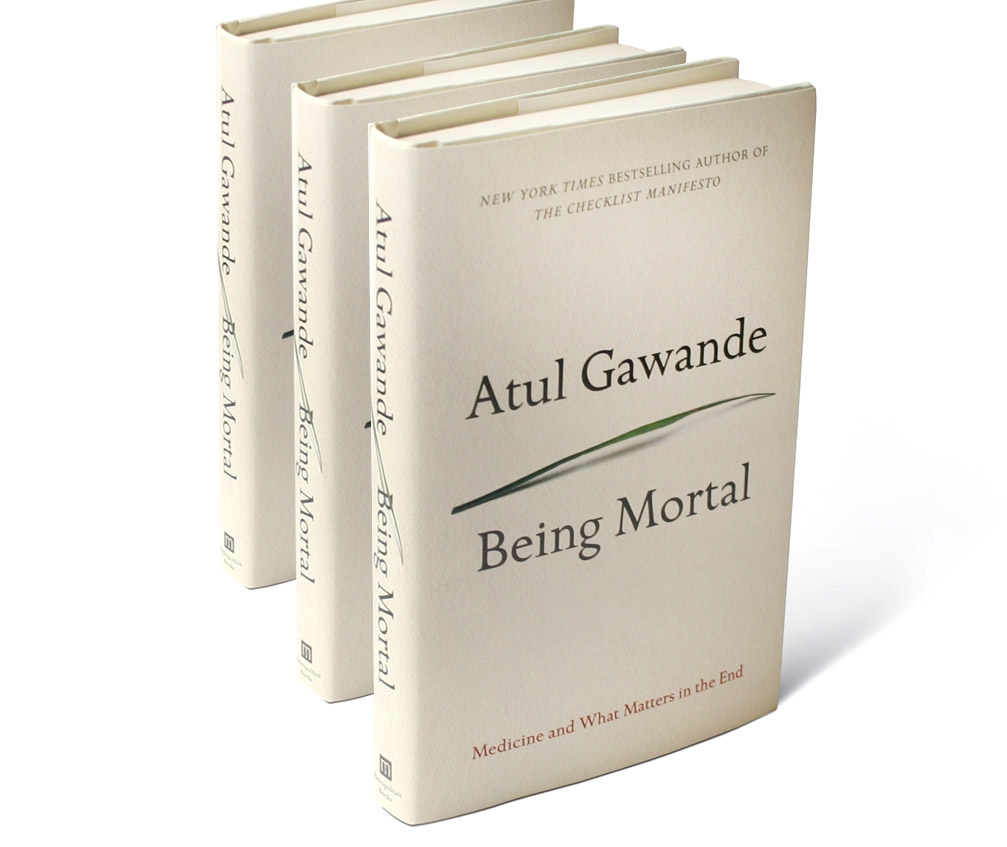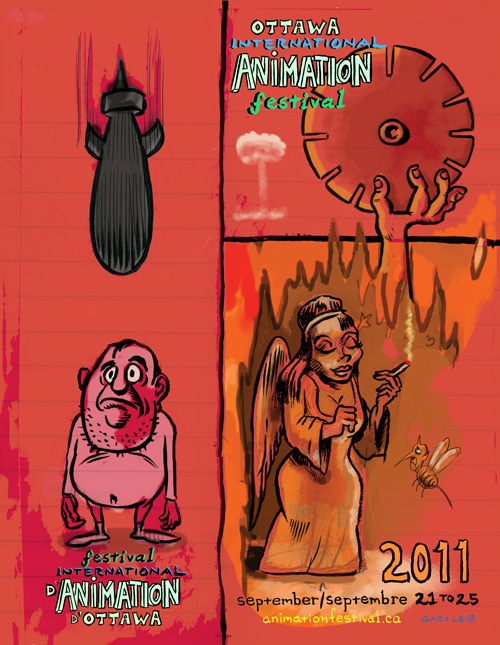
Learning How to Die – Being Mortal: Medicine and What Matters in the End
In his latest thoughtful, moving book Being Mortal: Medicine And What Matters in the End the doctor and writer Atul Gawande tells the achingly sad story of Sara. In the prime of life and while pregnant with her first child, Sara was diagnosed with inoperable lung cancer. Doctors induced labour and, to everyone’s relief, the baby was born healthy. Sara could now focus all of her considerable energies on confronting her dire diagnosis and prognosis. She started chemotherapy. When one drug failed she would insist on trying another drug, no matter how slim the chances of success. She underwent painful procedures to drain her lung of built up fluids. The initial diagnosis was given in June. By December the cancer had spread like a fire racing through a parched forest. It was now through out both her lungs, as well as her liver and spine. All the chemo and the associated pain and suffering had done nothing to stem the disease’s relentless advance. But Sara and her family remained determine to fight on. Her doctors, meanwhile, understood that she would succumb to her illness and that any further interventions would likely fail to prolong her life by even a single day. Yet there was a reluctance to make so definitive a declaration. As Gawande suggests, who were they to insist Sara’s will to survive would do nothing to extend her life? It’s a quandary no doubt familiar to most doctors.
Sara’s story goes to the heart of Being Mortal. Just as the title suggests, the book is about coming to grips with our mortality. Gawande is not simply talking about individuals coming to terms with the inescapable; he’s talking about the institution of medicine as well. It’s the intersection where medicine and dying meet that most intrigues and concerns him. What is the role of medicine in the life of a terminally ill patient? What is the role of medicine for an elderly patient at the end of her life? The answers might appear self evident. Every doctor’s solemn oath is to “do no harm.” Medicine’s role is to help people who are sick due to illness or injury. At its heart, medicine is a life sustaining enterprise. It can seem as simple as that.
Alas it isn’t quite so simple. As Gawande explains, until recently death typically arrived quickly following an injury or the onset of illness. By contrast, life’s final stages are now often protracted affairs. Death is still inevitable, but it’s arrival is often preceded by long durations of horrible physical pain, mental deterioration, and the loss of bodily functions. Experiencing various forms of indignities is not uncommon among those who are nearing the end of life. Such scenarios raise what can be heart wrenching, difficult decisions, not only for patients but for their families as well. Is it worth extending life if that additional time will only mean a continuation of unbearable pain or the ongoing experience of various indignities? How should life’s final stage be experienced? There are no simple answers to such questions. Nevertheless medicine, according to Gawande, does a poor job of helping patients navigate end of life transitions in ways conducive to comfort and peace of mind.
In all of his books, Gawande documents his search for improvements in the field of medicine. For a doctor so familiar with human suffering, this is where hope lies. Being Mortal is a challenging book about one of the most challenging topics of all, death. The patients he writes about often suffered through painful, debilitating illness before finally passing. Yet the book is not without moments of hope: they act like small beacons of light in an otherwise dark night. Such moments have nothing to do with therapeutic breakthroughs in, for example, cancer treatments. Instead Gawande focuses on the value of improved communication and eliminating the need to make difficult choices for those nearing the end. Among the most important innovations in palliative care, for example, is better communication between doctors and nurses and their patients. Conversations with the terminally ill should not simply be about treatment options. That will do little to assuage a patient’s fear and anxiety. Care givers must also focus on a patient’s priorities for their remaining days. They must be prepared to invest time in these sorts of conversations. They must also be skilled listeners. Gawande also highlights the decision among American insurance companies to eliminate the choice terminally ill patients once had to make between therapeutic interventions and hospice care. Once patients were not forced to make that sort of choice hospice care admissions among the terminally ill increased. As Gawande suggests, this was not unusual. Other outcomes, however, were unanticipated. To begin with, there was a decrease in admissions to the ICU and Emergency departments. There were fewer people exercising the choice to use therapies that offered little hope of prolonging life but were sure to cause increased pain and suffering. Most remarkable of all, according to Gawande, these patients survived longer on average than their terminally ill counterparts who did not choose hospice care. Accepting death’s inevitability, in other words, had the unexpected benefit of prolonging life.
Gawande follows a formula when writing about medicine. In wonderfully accessibly prose, he tells patients’ stories. The stories, however, are always interrupted by analysis of the bigger medical or social questions they raise. The respective experiences of his now deceased Indian grandfather and his wife’s grandmother, for example, are used as vehicles to explore the theme of contrasting attitudes to the elderly. Occasionally the reader might feel as though he’s gone off on one too many tangents. More often than not, however, he effectively weaves together story telling and analysis. The result are chapters that are at once deeply poignant and highly thought provoking and informative. It’s Gawande’s skill at addressing both the head and the heart that makes him such a good writer and Being Mortal such an important book.
The book’s value also stems from Gawande’s take on the most sensitive medical issue related to the theme of our mortality: the right to physician assisted suicide. He expresses his own deeply felt ambivalence. He agrees that it’s necessary in some cases but fears its potential insidious effects on a society’s approach to the terminally ill. Yet so much of what Gawande writes highlights what is often lost in the debate. Doctors and patients, when navigating these sorts of treacherous waters, often make choices that expedite the process of dying. They do so because the alternatives are more fearsome. Terminally ill cancer patients often choose not to subject themselves to further rounds of chemotherapy when the likelihood that it will do any good is negligible. More importantly, they feel that doing so would compromise the quality of the short time they have left. Most patients don’t want to subject themselves to severe pain if they sense that it’s pointless. They may not want to undergo more medical interventions if it means they can’t spend their remaining days at home and in the constant presence of loved ones. That sort of setting, many patients conclude, is conducive to a more peaceful death.
Similarly, the very elderly facing an array of illnesses will often forego further medical interventions if it means a severely compromised quality of life. This is especially true of elderly patients who are navigating that achingly difficult transition from being sound of mind to being something much less. They may want to firmly establish what sort of interventions are permissible while they are still able to think clearly about such questions. Doing so involves summoning one’s courage and insisting on retaining one’s dignity. It may also require the assistance of a physician. Who is anyone to deny people the right to exercise a little bit of control over life’s final stage? In this, as in so many other sensitive issues involving medicine and patients, Gawande reveals his wisdom and deep humanity.
Nevertheless, there was at least one recurring question for me as I read the book. Is Gawande laying too much of a burden at the feet of medicine and medical professionals? To be sure, implementing enlightened protocols in palliative care units and insurance companies acting responsibly are important. But even highly trained medical professionals do not necessarily have the emotional intelligence required to engage with dying patients in the way Gawande advocates. He himself strikes the reader as not only wise and humane, but as someone who is himself perpetually striving to improve. It’s easy though to imagine doctors who lack that sort of sensitivity or the drive to be better. Doctors and nurses, moreover, must strike a delicate balance. On the one hand, they need to constantly assess a dying patient’s medical needs. On the other, they have to remain sufficiently detached. The results are not always optimal. Doctors can give a clinically accurate prognosis that does nothing to address a dying patient’s emotional needs. Alternatively, in a bid to address those needs, doctors may overestimate the length of time a dying patient has left. In so doing they risk giving dying patients false hope.
Indeed Gawande confesses that he was guilty of just this with Sara. He admits he would more readily talk to her about experimental therapies than the stark reality of her condition. He did not want to be the one to say Sara’s hope and determination would not help her overcome her cancer. But eventually he and the other doctors caring for her would have no alternative but to be be absolutely forthright. Sara was rushed to the hospital in February the following year with pneumonia. She was given morphine to dull her pain and improve her breathing. Tests indicated the cancer was now in the brain. Still she might have survived this latest episode of severe illness, but to what end? She would only continue to deteriorate and experience more pain and suffering. Her family doctor thought it imperative that this be communicated to Sara’s husband and parents. Only then did Sara’s family insist that nurses and doctors not intervene. The time had come. They wanted her to be able to pass as painlessly and peacefully as possible. With her husband next to her Sara died the next day.








